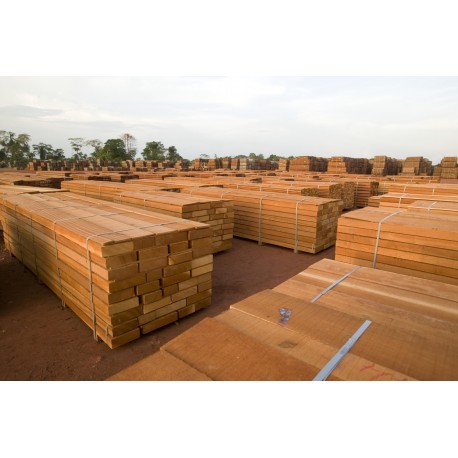Malaysian Meranti Wood
Elegance of the Malaysian Meranti Wood, which we offer, is acclaimed by the clients all over the world. Giving a magnificent blend of beauty, strength and durability, this Malaysian Meranti Wood is priced at competitive rates. The natural appearance as well as the complex designs makes this Malaysian Meranti Wood the best for interiors.
Data sheet
| Hardness | Moderately Hard |
| Common Name(s) | Light Red Meranti, Lauan, Philippine Mahogany |
| Scientific Name | Shorea spp. |
| Tree Size | 65-130 ft (20-40 m) tall, 3-6 ft (1-2 m) trunk diameter |
| Specific Gravity (Basic, 12% MC) | .40, .48 |
| Janka Hardness | 550 lbf (2,460 N) |
| Modulus of Rupture | 11,210 lbf/in2 (77.3 MPa) |
| Elastic Modulus | 1,652,000 lbf/in2 (11.39 GPa) |
| Crushing Strength | 6,120 lbf/in2 (42.2 MPa) |
| Radial Shrinkage | 4.1% |
| Tangential Shrinkage | 7.8% |
| Volumetric Shrinkage | 12.6% |
| T/R Ratio | 1.9 |
| Color/Appearance | Color can be highly variable depending upon the species: ranging from a pale straw color, to a darker reddish brown. |
| Grain/Texture | Has a coarse texture with medium to large pores. Grain is sometimes interlocked. |
| Endgrain | Diffuse-porous; large to very large pores in no specific arrangement, few to very few; solitary and radial multiples of 2-3; tyloses occasionally present |
| Rot Resistance | Reported as non-durable in regard to decay resistance, and is also susceptible to insect attack. |
| Workability | Typically easy to work, due to its low density. Though some rough or ragged surfaces may be left while sanding, and it may be necessary to sand up to a finer grit to obtain a satisfactory finish. |
| Odor | No characteristic odor. |
| Allergies/Toxicity | Although severe reactions are quite uncommon, Meranti in the Shorea genus has been reported to cause eye, throat, and skin irritation. |
| Pricing/Availability | Meranti is widely harvested and available worldwide. It should be moderately priced despite the fact that it is imported. |
| Sustainability | The majority of Shorea species are listed as being critically endangered due to a population reduction of over 80% in the past three generations, caused by a decline in its natural range, and exploitation. |
| Common Uses | Plywood, interior furniture, general construction, concrete forms, as well as a number of other general utility purposes. |
| Comments | Sometimes referred to as “Lauan,” wood in the Shorea genus is very commonly used in southeast Asia, and there is an abundance of variety between the difference species: each with different working properties, appearances, and mechanical strength values. |
| Termite Resistant | No |
| Strength Group | Reasonably Low |
| Shrinkage | Low |


